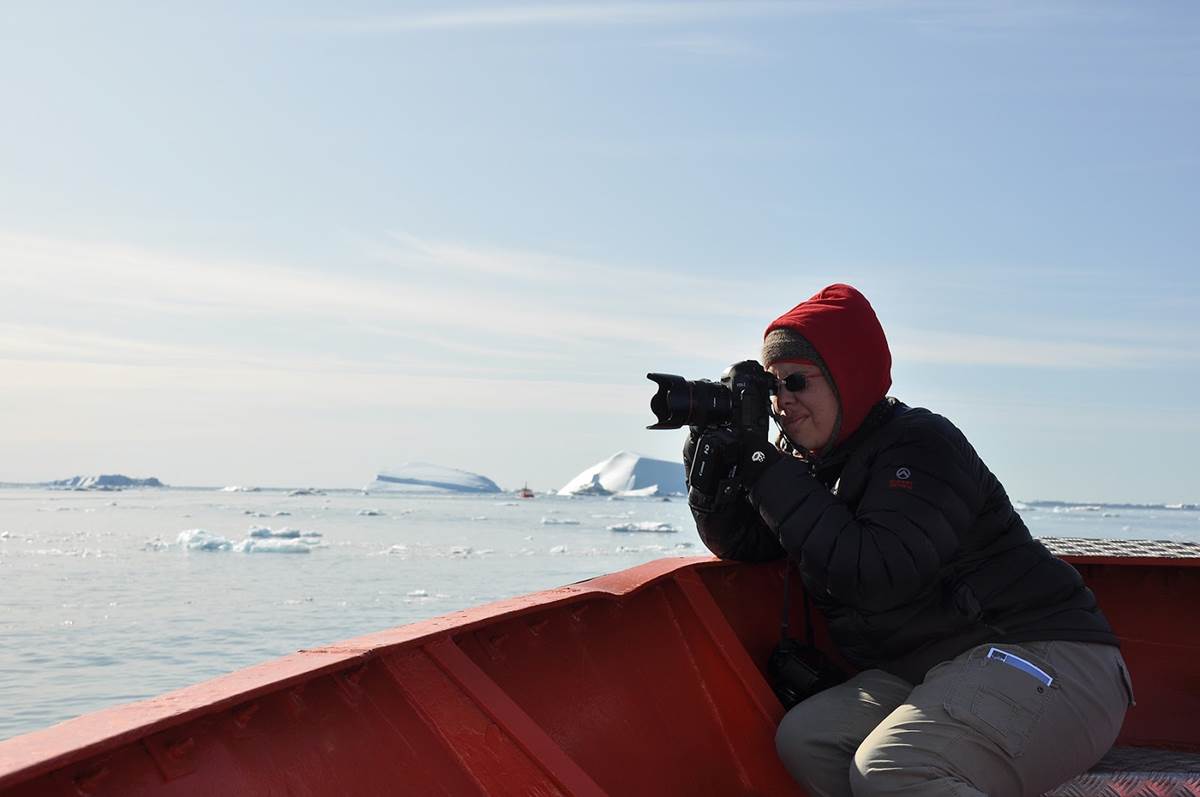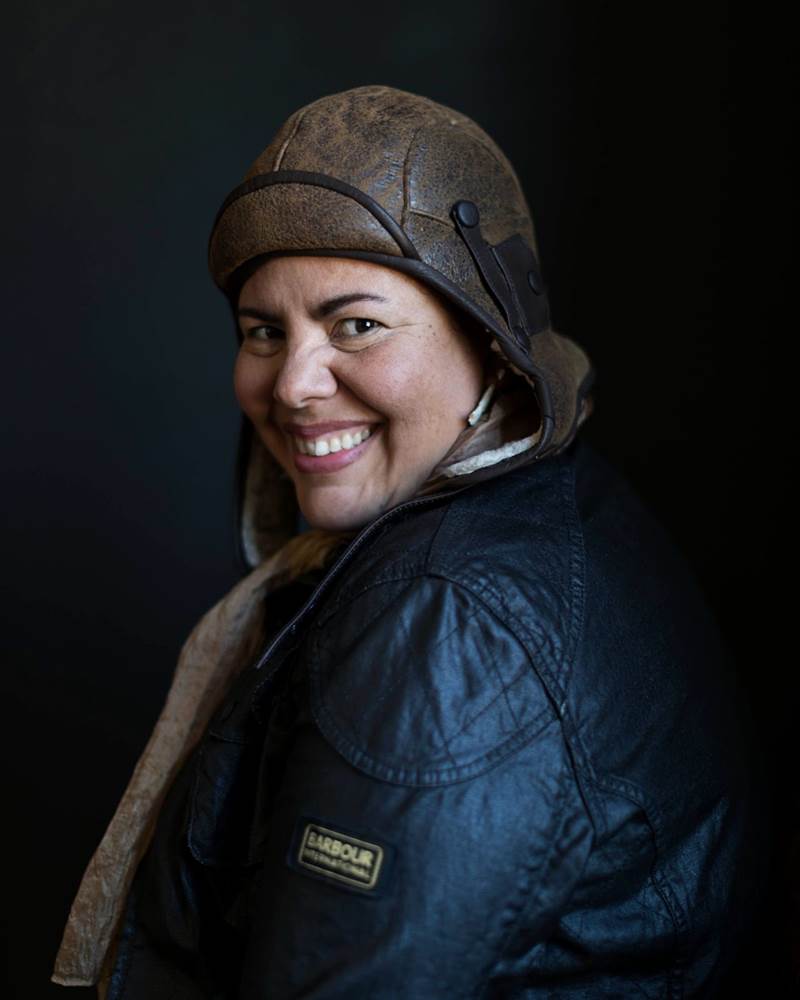Today (August 19th) happens to be World Photography Day — so what better way to celebrate than to hear from a photographer who specializes in capturing the world around us? National Geographic recently interviewed Camille Seaman, who is regularly a featured Expert on National Geographic Expeditions trips and has been published in National Geographic magazine.
Tell us about yourself, your expertise and your connection with National Geographic.
My name is Camille Seaman, and I am a National Geographic Magazine contributing photographer. I have been published in the magazine since 2006 and I had my first cover with some of the international covers in 2017.
Which trips will you be taking soon with National Geographic Expeditions?
In a few weeks, I will be traveling as a photography expert in southeast Alaska onboard the National Geographic Seabird. Then, I will be leading something very new and different for me, which is a walking trip doing the El Camino de Santiago in Spain. For me, that isn’t so much photography-based, but you can bet I’ll have my phone with me using that as a camera. Then, in December I will be in Antarctica on the National Geographic-Lindblad ships down there.
What are your favorite National Geographic Expeditions trips you’ve been on?
My favorite National Geographic Expedition trips so far are definitely the ones where I’m on the newer ships, like the Resolution and the Endurance. Those ships can go in places that other ships can’t even dream of going. As a photographer, that gives me opportunities to make images that most people on the planet will never have the opportunity to make.
I’m really excited to do more of land-based National Geographic Expedition trips and see what the differences are, as opposed to being on a ship.
What’s the benefit of traveling with a photographer on these expeditions?
99.9% of people have a desire to record their experience and share that with their family, friends or a larger audience, like on Facebook or Instagram. We even get people who are very keen to improve their photography and challenge themselves in ways that they haven’t before.
Regardless of your skill level, having a National Geographic photographer on these expeditions is invaluable. You get to literally walk beside us and spend time. How often are you in a room, let alone on an entire journey, with someone who is an expert at recording the light in these specific places? That is really incredible.
And, whether you’re using a phone as your primary camera or a fancy camera, you can elevate your skills.
What are your top tips for photographers, regardless of skill level?
My first tip (and I know it sounds really basic, but it’s really incredible how many people forget) is to make sure your lens is clean. Part of the reason your cellphone images aren’t sharp or have a haze to them is because your fingertips have put some sort of oil or debris on that lens. That goes for people with larger cameras, as well. It’s amazing how many people don’t check their lens while they’re out there photographing and then you get back and you realize there was a drop of water on it, so you have this blurry spot in the middle of your images. I highly recommend always carrying a microfiber cloth and getting into the habit of cleaning your lens periodically, not just before and after a trip.
My next tip is to consider the sun. Are you photographing into the sun? Is it on the side of you? Is it behind you? Even just observing where the sun is when you are about to make a photo can really make or break your photograph. Being aware of the position of your body in relationship to the sun is really important.
Lastly, show me how you see the world and don’t think about making a picture like you’ve seen a National Geographic photographer make. It’s so much more powerful to see a personal image from your unique viewpoint, rather than trying to copy an image that you’ve seen. I know that copying is part of how you grow, but the quicker you learn that the value is recording your unique experience, the more and further you will advance your photography ability.
Do you have any smartphone specific tips for those without camera equipment?
There’s so much you can do with smartphone. Part of my frustration with smartphone cameras is that they all seemed very over-sharpened. For those with a more discerning eye, you will notice that like they just are almost too sharp. So, one of the things I learned recently (which has really been a game changer) is photographing using raw. Yes, the file sizes are larger and it’s not something you can email, but the quality is incredibly improved by not using the algorithm that comes in your phone.
For those who are just starting with your smartphone, I recommend that you turn on your grid lines. This can help make sure that your horizons are straight (if that’s what you want), but also to help composition. When you have your grid lines on, you can adhere to the Rule of Thirds or the Golden Ratio to make more interesting compositions.
Do you have any editing tips that you find yourself using frequently?
The better the image you start with, the less editing you will find yourself having to do. For example, having a clean lens and knowing where the sun is in your image will help you to have brighter colors or more dramatic lighting. With that, you’ll have less editing to do.
I’m a person who doesn’t actually enjoy doing a lot of editing. I was raised to make the image that I wanted in the camera so that it didn’t have to spend a lot of time trying to fix it in the computer. I don’t want to give the impression that my images look the way they do out of right out of camera, because that’s not true – they do have a slight little contrast boost or something like that. But, having a better cleaner image to start with will always make that much easier. For me, if it takes more than 60 seconds, I won’t use the image.
In your opinion, what are the most important aspects of a great photo?
The images that I keep looking at over and over are images where you forget there was a photographer present. It’s just you, the viewer, with the image. If you can make images where you are suddenly transformed into that place of where that image is and you forget that there was someone standing there to make the image, I think that’s really powerful.
Altogether, an image that has a great composition and a good quality of light, but also has some sort of soulful aspect is really important to me.


